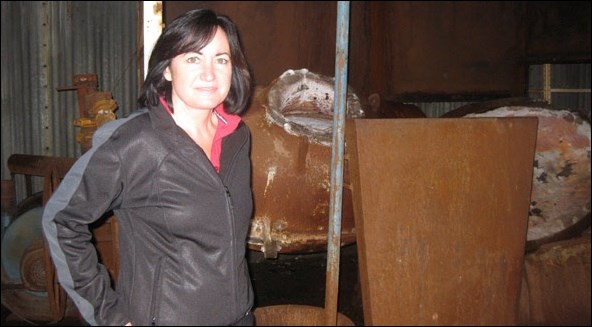When it comes to the anticipated rebirth of the Tartan Lake mine, Flin Flonners can be forgiven for their skepticism.
For the last half-dozen years, one mining CEO or another has forecast the imminent restart of the long-idle gold mine, situated a dozen kilometres outside the community.
Walter Henry is the latest. He’s the still-fresh head of Satori Resources, the obscure Toronto-based mineral exploration and development company that now owns Tartan.
“Absolutely,” says Henry when asked whether Satori still hopes to get the mine up and running.
A professional-looking man with a background in international project financing, Henry is actively seeking investors who share his faith in Tartan.
He says Satori has engaged a geological consulting firm, Orix Geoscience, to update Tartan’s geological modelling.
With that data, Satori hopes to update Tartan’s guideline-compliant resource estimate. Next would come an evaluation of whether to conduct an economic assessment.
At this stage, Henry’s best guesstimate is that Tartan needs between
$7 million and $9 million, and 18 to 24 months of work, to reopen.
Whether that money can materialize is anybody’s guess, but Henry argues that Tartan stands out from the pack of other promising gold projects.
For one, the property was once a living, breathing mine. During its brief run, from May 1987 to November 1989, Tartan generated 45,000 ounces of gold. In today’s dollars, that much gold would be worth nearly $60 million.
Low electricity costs and a close proximity to an educated workforce also bode well for the project, in Henry’s view.
Henry says it’s too early to say how many workers might be needed at a revamped Tartan mine. A previous estimate by another CEO pegged the number at 60 to 70.
As a Vancouver-based columnist for investment website Stockhouse.com, Chris Parry has kept his eye on Tartan.
Like Henry, Parry feels that the short time span (by mining standards) needed to restart Tartan plays in its favour, as does the existing infrastructure at the site.
“[That] is well beyond what most gold projects have,” says Parry, a journalist whose white hair and diverse lexicon reveal his breadth of experience.
Failed efforts
It’s not for lack of trying that Tartan Lake mine sits silent more than a quarter-century after its closure.
At one point executives were contemplating operating the mine in conjunction with a separate gold project near Denare Beach. (Nothing ever happened with that property).
Another brainwave was to spawn capital dollars by reprocessing gold still trapped inside old mine waste at the Tartan site. That too failed.
In the spring of 2014, according to reports, Satori was looking to grow medicinal marijuana inside the Tartan mine shaft and use the sales revenue to relaunch the mine.
At the time, medicinal marijuana was seen as a hot investment. And given that nearby Trout Lake mine once hosted a medical pot grow-op, the notion didn’t seem that far-fetched – at least initially.
“I think when they started to get into that, they found the reality of it was that it’s a pretty hard thing to do,” says Parry.
Parry no longer views marijuana as viable for Satori. He says federal regulations now require that medical pot be grown in pharmaceutical-quality facilities, an environment difficult to create in a mine.
Just last month, Satori announced a letter of in-tent to purchase COC Greenhouses Incorporated. Based in BC, COC apparently produces cannabis oil, which has medicinal applications.
The plan was to spin out the merged companies’ mining assets, namely Tartan Lake mine, but the deal died after COC failed to raise the $1 million equity requirement.
Renewed focus
With COC out of the picture, Parry’s sources tell him that Satori is again focusing its labours on setting up Tartan for another run.
The timing is good, he says, in part thanks to heightened interest in gold from investors who are souring on oil.
“If [Satori goes] out there and they start turning the wheels on this mine again, there are plenty of people out there who are looking for somewhere to invest in gold,” says Parry. “Satori’s definitely one of those companies that, they’re so far down the chain that any positive news would be a nice bump for them.”
Parry says he would be surprised if Satori isn’t working furiously behind the scenes trying to take advantage of the possibilities around Tartan.
But he says one of his knowledgeable sources wonders whether the Satori team is the right group to generate the requisite investment.
That’s a fair question. Not only does Satori lack a single active mine, its stocks are practically worthless at three cents apiece (as of Wednesday).
Still, Tartan was a feasible mine in the late 1980s, when gold hovered around $450 an ounce. Today the price is around $1,300 an ounce.
So all things considered, how likely is a Tartan rebirth? Parry won’t make a firm prediction.
“You can never really say that something’s definitely going to happen until they’re actually pulling rocks out of the ground and finding shiny stuff in them,” he says.




